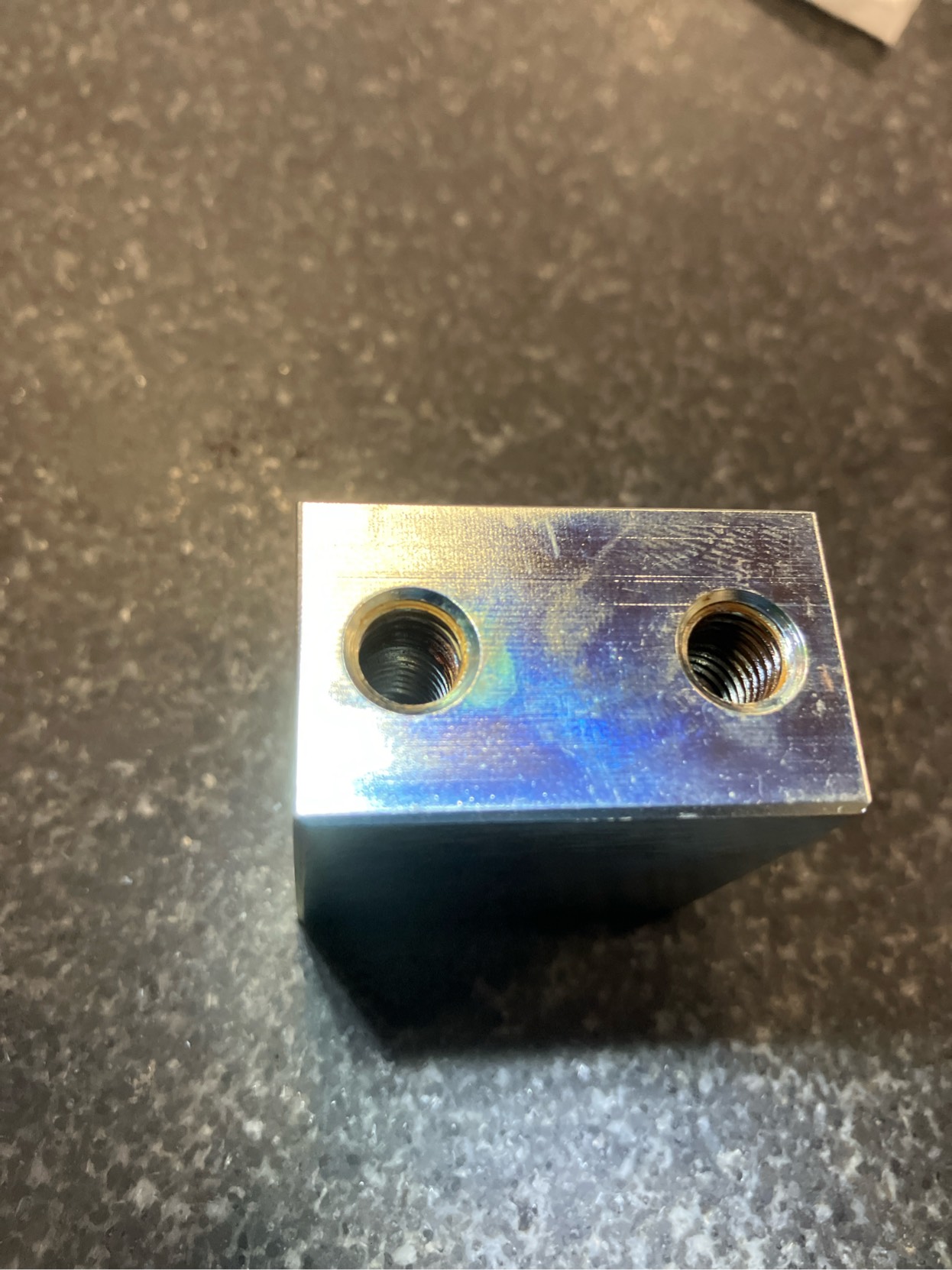Rust Formation in Threaded Blind Holes Post-Galvanization2025-01-02
The Quality Control (QC) team at Apporo Industries identified an issue with CNC milling machined parts returned from a galvanizing supplier. Specifically, the edges of the threaded blind holes exhibited yellow rust spots. These blind holes, which do not pass through the entire part, were likely not fully dried after the galvanizing process, leading to residual chemicals and solutions inside the holes. It reminds us that there was a similar to a previous analysis conducted by Apporo Industries on aluminum alloy threaded holes (refer to Apporo CNC Analysis).

Rust Formation in Threaded Blind Holes Post-Galvanization
After analysis, the causes that may lead to rusting inside the hole are as follows:
1.) Chemical Reaction: The rust formation is likely due to the presence of residual acidic solutions from the galvanizing process that were not completely dried or neutralized. When these solutions react with the metal, especially in confined spaces like blind holes, rust can form.
2.) Environmental Factors: The environment in which the parts were stored or transported after galvanization could have contributed to the rusting if there was moisture present.
3.) Material Properties: The material of the part might have an inherent susceptibility to rust formation under certain conditions, particularly if not properly protected by the galvanizing layer.
Anti-rust Improvement Measures:
Rust can be caused by many different factors, and once it starts, it can get worse if not treated properly and promptly. Therefore, avoiding rust is very important. Here are some suggested methods to prevent rust:
1.) Enhanced Drying Process: Implementing a more strict drying process post-galvanization, especially focusing on ensuring that all internal cavities and blind holes are thoroughly dried. This could involve using forced air drying, vacuum drying, or heat treatment to evaporate any trapped moisture or chemicals.
2.) Chemical Neutralization: After galvanizing, a neutralization step could be added to the process to counteract any residual acidic effects, reducing the likelihood of rust formation.
3.) Inspection Protocols: Strengthening inspection protocols to include specific checks for moisture or chemical residue in blind holes before parts leave the galvanizing facility.
4.) Material Coating: Considering the application of a protective sealant or additional coating inside the blind holes to prevent direct contact with moisture or air, which could initiate rusting.
5.) Storage and Transportation: Ensuring that parts are stored in a controlled environment with low humidity and are transported in packaging that minimizes exposure to moisture.
By implementing these measures, Apporo Industries aims to prevent future occurrences of rust in threaded blind holes post-galvanization. The case underscores the importance of thorough post-treatment processes in galvanizing, particularly for CNC milling machined parts with complex geometries like blind holes, to ensure the longevity and quality of the finished product.
